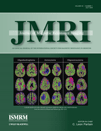Quantitative contrast-enhanced perfusion measurements of the human lung using the prebolus approach
Abstract
Purpose
To investigate dynamic contrast-enhanced MRI (DCE-MRI) for quantification of pulmonary blood flow (PBF) and blood volume (PBV) using the prebolus approach and to compare the results to the global lung perfusion (GLP).
Materials and Methods
Eleven volunteers were examined by applying different contrast agent doses (0.5, 1.0, 2.0, and 3.0 mL gadolinium diethylene triamine pentaacetic acid [Gd-DTPA]), using a saturation-recovery (SR) true fast imaging with steady precession (TrueFISP) sequence. PBF and PBV were determined for single bolus and prebolus. Region of interest (ROI) evaluation was performed and parameter maps were calculated. Additionally, cardiac output (CO) and lung volume were determined and GLP was calculated as a contrast agent–independent reference value.
Results
The prebolus results showed good agreement with low-dose single-bolus and GLP: PBF (mean ± SD in units of mL/minute/100 mL) = single bolus 190 ± 73 (0.5-mL dose) and 193 ± 63 (1.0-mL dose); prebolus 192 ± 70 (1.0–2.0-mL dose) and 165 ± 52 (1.0–3.0-mL dose); GLP (mL/minute/100 mL) = 187 ± 34. Higher single-bolus resulted in overestimated values due to arterial input function (AIF) saturation.
Conclusion
The prebolus approach enables independent determination of appropriate doses for AIF and tissue signal. Using this technique, the signal-to-noise ratio (SNR) from lung parenchyma can be increased, resulting in improved PBF and PBV quantification, which is especially useful for the generation of parameter maps. J. Magn. Reson. Imaging 2009;30:104–111. © 2009 Wiley-Liss, Inc.




